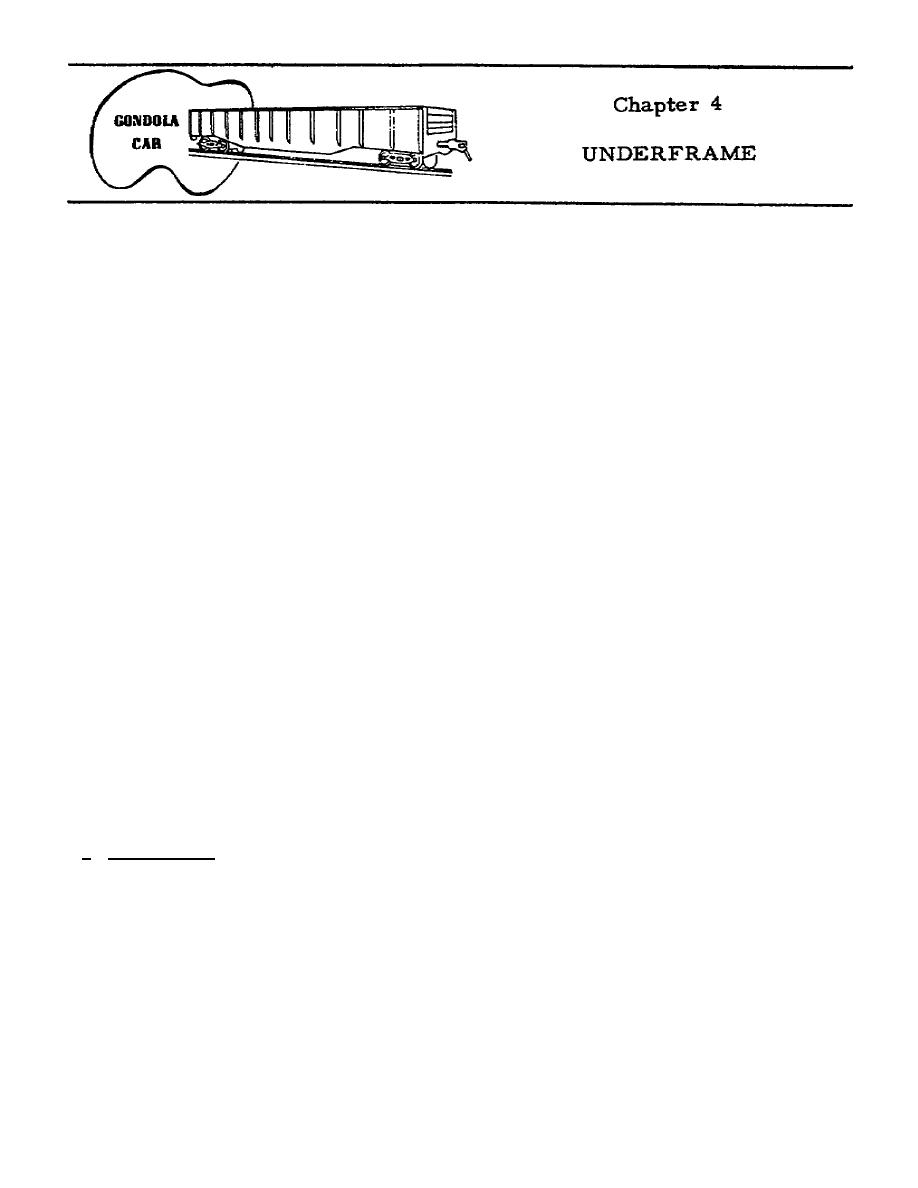
4.1. GENERAL
The underframe is the structural framework to which the trucks discussed in the previous chapter are
connected. The parts of this framework are welded or riveted together, or both. The assembled underframe is
the platform upon which the superstructure of the car is built. It supports the combined weight of the car body
and any lading the car may be carrying, and receives and absorbs the pulling stresses and the buffing shocks
while the car is being coupled and moved. The underframe consists of all the framework below the floor of the
car including the sills, body bolsters, cross' bearers, crossties, floor stringers, striker plates, and safety
attachments. These main parts are common to any underframe, except that used for some tank cars.
Figure 4.1 shows both a typical riveted underframe and a welded-steel underframe. Refer to this figure as
you study each part of the underframe as it is discussed in the following paragraphs.
4.2. SILLS
Three of the structural members of the underframe are the center, side, and end sills. Actually there are
five members:
one center sill, two side sills, and two end sills.
They are discussed in the following
subparagraphs and labeled in figure 4.1.
a. The center sill is the main longitudinal member of the underframe structure. It is the backbone of the
frame and transmits the pulling stresses and the buffing shocks from one end of the car to the other. Pockets are
located in each end of the center sill to house the draft gear and couplers discussed in the next chapter. The
thickness of the sill is, in some cars, increased between the two body bolsters. This increase in thickness results
in an increase in the structural strength of the underframe. As a rule, an increase in the thickness of the center
sill is accompanied by a similar increase in the thickness of the side sills.
58



 Previous Page
Previous Page
